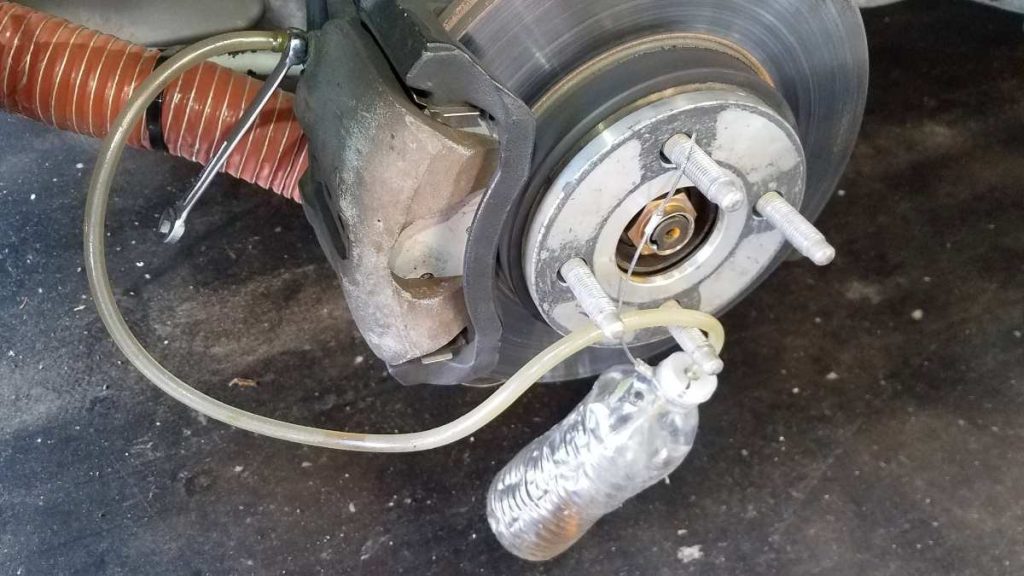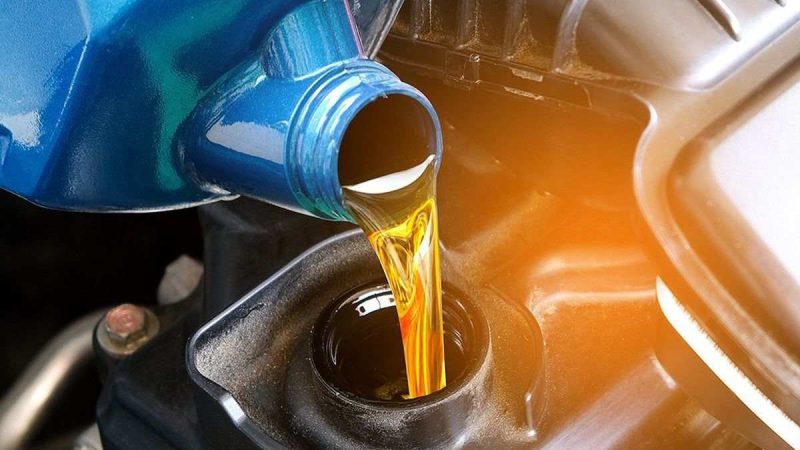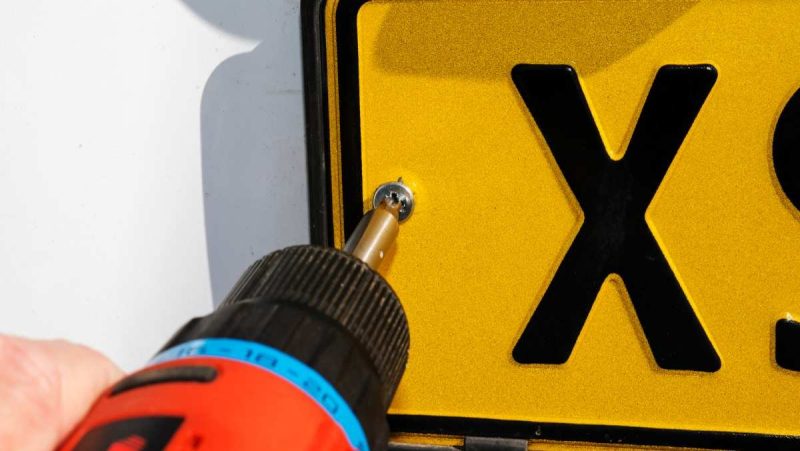How To Gravity Bleed Brakes

Gravity brake bleeding is a procedure anyone who maintains their own brakes should be able to do. This guide shows you how to gravity bleed brakes alone.
All brakes need to be bled at some point. Now, if the idea of “bleeding” something sounds icky or gruesome, you have nothing to worry about. Gravity bleeding brakes simply entails draining and replacing your old brake fluid.
See? Not so scary.
Indeed, gravity bleeding is as easy as it sounds. The process involves opening up the master cylinder and letting the old brake fluid drain out of the brake lines under the force of gravity.
It’s an inexpensive car maintenance procedure that works on all brake systems that have the brake master cylinder positioned high on the firewall and above the level of all four wheels. Better yet, it can be performed by just you with very basic tools.
This guide provides a detailed, step-by-step guide on how you can gravity bleed your brakes like a champ. But first, let’s look at why brake bleeding is necessary in the first place.
IN THIS GUIDE
Why Is Gravity Bleeding Brakes Important?
Like all the fluids in a car, your brake fluid needs to be maintained to ensure the optimal performance of the brakes.
Brake bleeding is important because brake fluid is hygroscopic, meaning it absorbs moisture from the air. This absorption lowers the boiling point of the fluid, potentially causing some of it to escape the brake lines as steam.
When this happens, the brake pedal will feel spongy and you will notice black goo form in the fluid reservoir. The goo is corrosive and can cause even more air to enter the system, exacerbating the damage to your brakes.
Brake bleeding is, therefore, a necessary procedure that must be performed throughout the life of your car or truck or whenever you replace the brake pads, calipers, or lines. It shouldn’t be ignored.
Just make sure to perform the procedure according to the intervals recommended by the manufacturer.
How To Gravity Bleed Brakes
Unlike painting a car and replacing bad spark plugs, gravity bleeding is a relatively easy and affordable car maintenance procedure that just about anyone can perform. However, you have to take proper safety precautions and make sure the job is performed well.
Tools You Need
Proper gravity bleeding requires the following tools:
- A Quart of brake fluid
- 5 feet of 3/16-inch plastic tubing
- A jar, bottle, or pan for holding residual fluid
- A floor jack and four jack stands
- A hammer or rubber mallet
- Masking tape
- Pair of vise grip
- Open-end wrench
Gravity Brake Bleeding
Once you have gathered all the necessary tools, you are ready to bleed the brakes. The process involves some waiting and can take 30 minutes or more to complete.
Step 1. Take Safety Precautions
First, brake fluid is caustic and can damage your skin, clothes, or any of your car’s paint or finishes. To be on the safe side, wear latex gloves and safety goggles, and cover up any area of the vehicle likely to come in contact with the fluid.
Second, park your car or truck on a flat level surface so that it doesn’t accidentally roll and hit something or someone.
Finally, make sure to have a plan for properly disposing of the old brake fluid. Like old gasoline, you can’t just throw brake fluid away willy nilly, as it’s a toxic and hazardous substance.
Step 2. Raise Vehicle, Remove Wheels
Use your floor jack to lift the vehicle slightly off the ground. Once raised, support it with the four jack stands, one at each corner.
Since you don’t want the vehicle falling on you, make sure it’s secure and evenly balanced before proceeding any further.
Next, remove the wheels to gain access to the brakes and place them in a safe and secure location so that they don’t get in the way of your work.
Step 3. Find The Brake Fluid Reservoir
Find the brake fluid reservoir. In most vehicles, it is a light-colored container with a black cap located in the engine compartment, in line with the brake pedal.
Open the reservoir and check the fluid level. You can use a large syringe pump or turkey baster to remove some of the old brake fluid, but don’t drain the reservoir completely as that would introduce air into it.
You’re going to top it with new fluid every time a brake is bled.
Step 4. Attach The Plastic Tubing
Use a vise grip to loosen the bleeder caps and then tighten them just enough so that the bleeder doesn’t weep.
A vice grip is essential for this step, especially if your brake calipers use M7 bleeders, which get stuck and strip easily. For calipers with large bleeders, use vise grip pliers.
Ten, working with one wheel at a time, starting with the right rear and then left rear wheel, place one end of the plastic tubing over the bleeder nipple and the other end into a container (jar, bottle, pan, etc.).
To ensure that air doesn’t get sucked back into the brake system, cover the bottom of the container with a little bit of fresh fluid.
Extending the tubing to a higher level than the reservoir will make the fluid flow easier. Masking tape can be used to secure it to the vehicle’s body so that you don’t have to hold it up yourself.
Step 5. Release The Old Brake Fluid
You need to be careful with this step. A simple mistake can mean starting the process all over again.
Use an open-end wrench to slowly open the bleeder nipple. Once the nipple is open, the old brake fluid will start flowing through the plastic tubing and into the jar or bottle.
Gently tapping the brake caliper a few times with a rubber mallet, the wooden handle of a hammer, or other similar devices is a technique commonly used to force the air bubbles to rise through the tubing quicker.
Continuously monitor the reservoir so that it doesn’t go dry, replenishing it with fresh fluid as necessary. This is very important and can’t be stressed enough.
Step 6. Close Bleeder, Replenish Brake Fluid Reservoir
Once you no longer see any air bubbles and the fluid runs clean, close the bleeder, place the container below the nipple, and remove the plastic tubing. Any fluid that drips from the nipple should fall into the container rather than on the floor.
Next, replenish the reservoir with fresh fluid.
Step 7. Bleed The Remaining Brakes
Repeat the previous steps to bleed the remaining brake, making sure to top up the reservoir every time you complete one to prevent more air from entering into the braking system.
The amount of time it takes to bleed the fluid from each brake may vary, but you should only stop when the fluid turns clear and is free of bubbles.
Step 8. Test Drive And Troubleshoot
After you have bled all the brakes, closed and tightened the bleeders, reinstalled the wheels, and lowered the vehicle, the final step in the gravity bleeding process is to go for a test drive to assess the results of your work.
Check how the pedal feels. Make sure it’s firm when depressed and holds constant pressure without dropping.
If the pedal feels mushy or rock hard, something went wrong. The Master Cylinder may be full of air or even defective, in which case you should have your vehicle inspected by an experienced mechanic.
Gravity Brake Bleeding FAQs
As we normally do with all of our guides, we have gathered some of the most popular questions on brake bleeding and answered them so that you’re not left wondering about anything.
Is It OK To Gravity Bleed Brakes?
Gravity bleeding is a simple and completely safe procedure that won’t damage your brakes if performed properly.
All you are simply doing is connecting a tube to the bleeders on your brakes, letting gravity pull out the old brake fluid from the brake lines, and replenishing the lines with fresh fluid.
How Long Does Gravity Bleeding Brakes Take?
It can take anywhere from 30 minutes to 40 minutes to gravity bleed your brakes. This method of brake bleeding is easier than other methods but generally takes more time to complete.
However, you will notice the time shorten with each successive brake you bleed. That’s because bleeding the first or second brake usually drains the brake fluid reservoir of all the old fluid, leaving you with only the brake lines to drain when bleeding the other brakes.
Can You Gravity Bleed All Four Brakes At Once?
Yes, you can gravity bleed all four of your brakes at the same time. In fact, bleeding all four at once is a great way to speed up the process and save time.
Just make sure to carefully monitor the brake fluid reservoir so that it doesn’t completely drain and run dry.
Is Gravity Bleeding Good Enough?
It depends on what you’re trying to accomplish. Gravity bleeding is good for draining old fluid out of your brake lines, but it may not be the best option for removing air out of them.
The reason for this is because the fluid moves too slowly for the bubbles to be pushed out.
The traditional method of bleeding pushes a higher volume of fluid through the brake lines at a faster rate, making it a better alternative for removing air.
Final Thoughts
Bleeding brakes using the power of gravity is a very easy process that can be performed by yourself with a handful of basic tools. Unlike other methods of removing brake fluid, you don’t need the help of anyone or pay a professional to get the job done.
This guide provided a step-by-step guide on how to gravity bleed brakes, a quick summary of which is as follows:
- Take safety precautions
- Raise your car or truck with floor jack and jack stands
- Locate brake fluid reservoir
- Attach plastic tubing to bleeder nipple
- Open bleed screws to release old oil and air bubbles
- Close bleeder, remove tubing, and top up reservoir
- Bleed remaining brakes
- Troubleshoot by testing driving vehicle
Bear in mind that while gravity bleeding is an easy and effective way of brake bleeding, it’s only feasible on firewall-mounted systems in which the master cylinder is positioned higher than the brakes. It will not work on underfloor-mounted street rod systems.
Now that you know what it means to gravity bleed brakes and how to do it effectively, you might also want to know how to start a car with a bad starter, fix a sagging headliner, and dispose of old gasoline the right way. Do you know how much the average car weighs?







